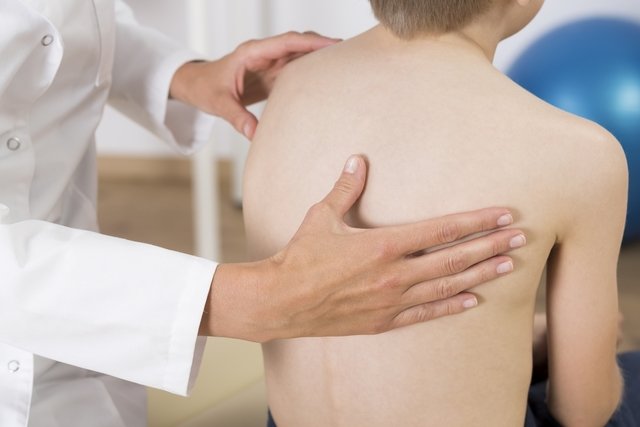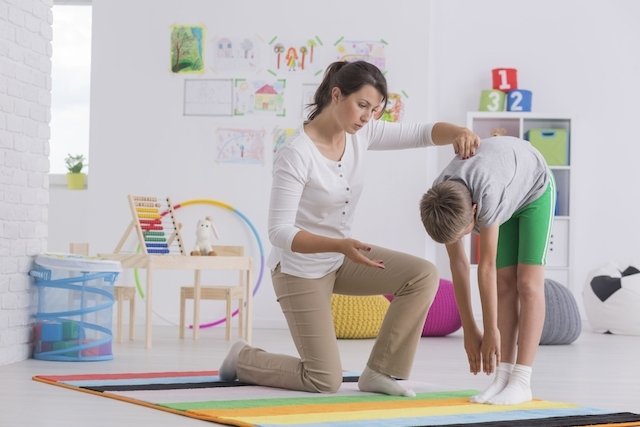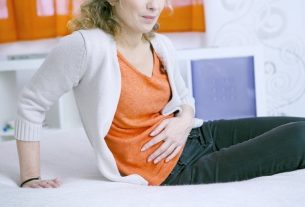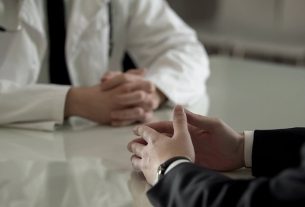Scoliosis is a lateral deviation of the spine, which becomes C or S shaped, instead of being straight. This change most of the time has no known cause, however it seems to be related to a lack of physical activity, poor posture or sitting or lying down for a long time with a crooked spine, for example.
Due to the deviation of the spine, scoliosis is popularly known as “crooked spine” and causes sins and symptoms such as one leg shorter than the other, muscle pain and a feeling of fatigue in the back. Although scoliosis is more common in young people and adolescents, children can also be affected, especially when other neurological changes are present, such as cerebral palsy.
It is important that scoliosis is identified and treated according to the orthopedist’s guidance to avoid the development of symptoms or complications, and physiotherapy, use of braces or surgery may be indicated in the most serious cases.

Scoliosis symptoms
The main signs and symptoms of scoliosis are:
- Having one shoulder higher than the other;
- Have scapulae tilted;
- Have one side of the hip tilted upwards;
- Having one leg shorter than the other;
- Muscle pain, the intensity of which varies according to the degree of scoliosis;
- Feeling of fatigue in the back, especially after standing or sitting for a long time.
If any signs or symptoms related to scoliosis are detected, it is important to consult an orthopedist so that a diagnosis can be made and the most appropriate treatment can be initiated, if necessary.
How the diagnosis is made
The diagnosis of scoliosis is made by the orthopedist based on the evaluation of the signs and symptoms presented by the person, in addition to being recommended to carry out some imaging tests to check the degree of spinal deviation. Initially, the doctor performs a physical examination that consists of the following test:
- Stand with your legs hip-width apart and lean your body forward to touch the floor with your hands, keeping your legs straight. If the person cannot place their hands on the floor, there is no need to force too much;
- In this position, the professional can observe whether a higher region of the spine appears on one side;
- If it is possible to observe this ‘high’, called hump, this indicates that there is scoliosis on that same side.
When a person has the symptoms of scoliosis, but does not have humps, scoliosis is mild and can only be treated with physical therapy.
In addition, the x-ray of the spine must be requested by the doctor and must show the vertebrae of the spine and also the hip, which are important for evaluating the Cobb angle, which indicates the degree of scoliosis that the person has, which helps to define the most recommended treatment. In some cases, an MRI may also be indicated.

Types of scoliosis
Scoliosis can be classified into several types according to the cause and the region of the spine affected. Thus, according to the cause, scoliosis can be classified into:
- Idiopathicwhen the cause is not known, occurs in 65-80% of cases;
- Congenitalin which the baby is born with scoliosis due to malformation of the vertebrae;
- Degenerativewhich appears in adulthood due to injuries, such as fractures or osteoporosis, for example;
- Neuromuscularwhich occurs as a consequence of neurological conditions, such as cerebral palsy, for example.
In relation to the affected region, scoliosis can be classified as:
- Cervicalwhen it reaches the C1 to C6 vertebrae;
- Cervico-thoracicwhen it reaches the C7 to T1 vertebrae
- Thoracic or dorsalwhen it reaches the T2 to T12 vertebrae
- Thoracolumbarwhen it reaches the T12 to L1 vertebrae
- Low backwhen it reaches the L2 to L4 vertebrae
- Lombossacralwhen it reaches the L5 to S1 vertebrae
Furthermore, you must know whether the curvature is to the left or right, and whether it is C-shaped, which indicates that it has only one curvature, or S-shaped, when there are 2 curvatures.
Treatment for scoliosis
Treatment for scoliosis may vary according to the severity of the deviation curvature and the type of scoliosis, and physiotherapy, use of a brace or surgery may be indicated in the most severe cases.
1. Physiotherapy
Physiotherapy is indicated to treat scoliosis that has a curvature of up to 30 degrees and can be done through therapeutic exercises, clinical Pilates exercises, spinal manipulation techniques, osteopathy and corrective exercises such as the postural re-education method.
2. Collect
When the person has between 31 and 50 degrees of curvature, in addition to physiotherapy, it is also recommended to use a special vest called Charleston, which should be worn at night while sleeping, and the Boston vest, which is to be worn during the day when studying. , work and carry out all activities, and should only be removed for bathing. The brace must be recommended by the orthopedist and for it to have the expected effect, it must be worn for 23 hours a day.
3. Surgery
When the spine has more than 50 degrees of curvature, surgery is recommended to reposition the spinal vertebrae on the central axis. Surgery is generally recommended for children or adolescents, which is when the results are better and the treatment is more effective. Surgery can be done to place plates or screws to center the spine. See more details about scoliosis treatment.
Bibliography
- JUNIOR, Mauro CMT; LEDUR, Felipe R.; LEITAF, Olavo B.; MARCON, Raphael M. et al. Anatomorradiological characteristics in adolescent idiopathic scoliosis with surgical indication. Brazilian Journal of Orthopedics. Vol 52. 3 ed; 344-348, 2017
- KISNER, Carolyn; COLBY Lynn Allen. Therapeutic exercises: Fundamentals and Techniques. 6th ed. São Paulo: Manole, 2016.
- Mark Dutton. Orthopedic physiotherapy: examination, assessment and intervention. 2nd ed. Porto Alegre: Artmed, 2010.
- CARDOSO, Letícia Rodrigues; GONÇALVES, Claus; BONVICINE, Cristiane; BARBOSA, Marcelo Adriano. Clinical and radiographic analysis before and after conservative treatment in adolescent idiopathic scoliosis: case study. Conscientiae Saúde Vol. 10 1.ed; 166-174, 2011
- FIORELLI, Alexandre et al. Reduction of juvenile idiopathic scoliosis after kinesiotherapy intervention: case report. Salusvita. Vol. 33. 3.ed; 355-363, 2014

Sign up for our newsletter and stay up to date with exclusive news
that can transform your routine!
Warning: Undefined array key "title" in /home/storelat/public_html/wp-content/plugins/link-whisper-premium/templates/frontend/related-posts.php on line 12
Warning: Undefined array key "title_tag" in /home/storelat/public_html/wp-content/plugins/link-whisper-premium/templates/frontend/related-posts.php on line 13




